時間の記憶@奥能登+鋸南
Memories of time @Oku-Noto + Kyonan
The Art of Teaの空間には、石川県・奥能登地方と千葉県・鋸南町で、空間のつくり手であるGRIDFRAMEが自ら向き合って採取したSOTOCHIKU素材が使われています。
SOTOCHIKU素材とは、風雨や日光に晒されたり、生命活動の場にあり続けることで時間を記憶した素材のことをぼくたちがそう呼んでいます。
The Art of Tea space uses SOTOCHIKU materials that were personally collected by GRIDFRAME, the space’s creator, in the Okunoto region of Ishikawa Prefecture and Kyonan Town in Chiba Prefecture.
We call ”SOTOCHIKU materials” the materials that have memorized the passage of time by being exposed to wind, rain, and sunlight, and by being involved in daily life activities.
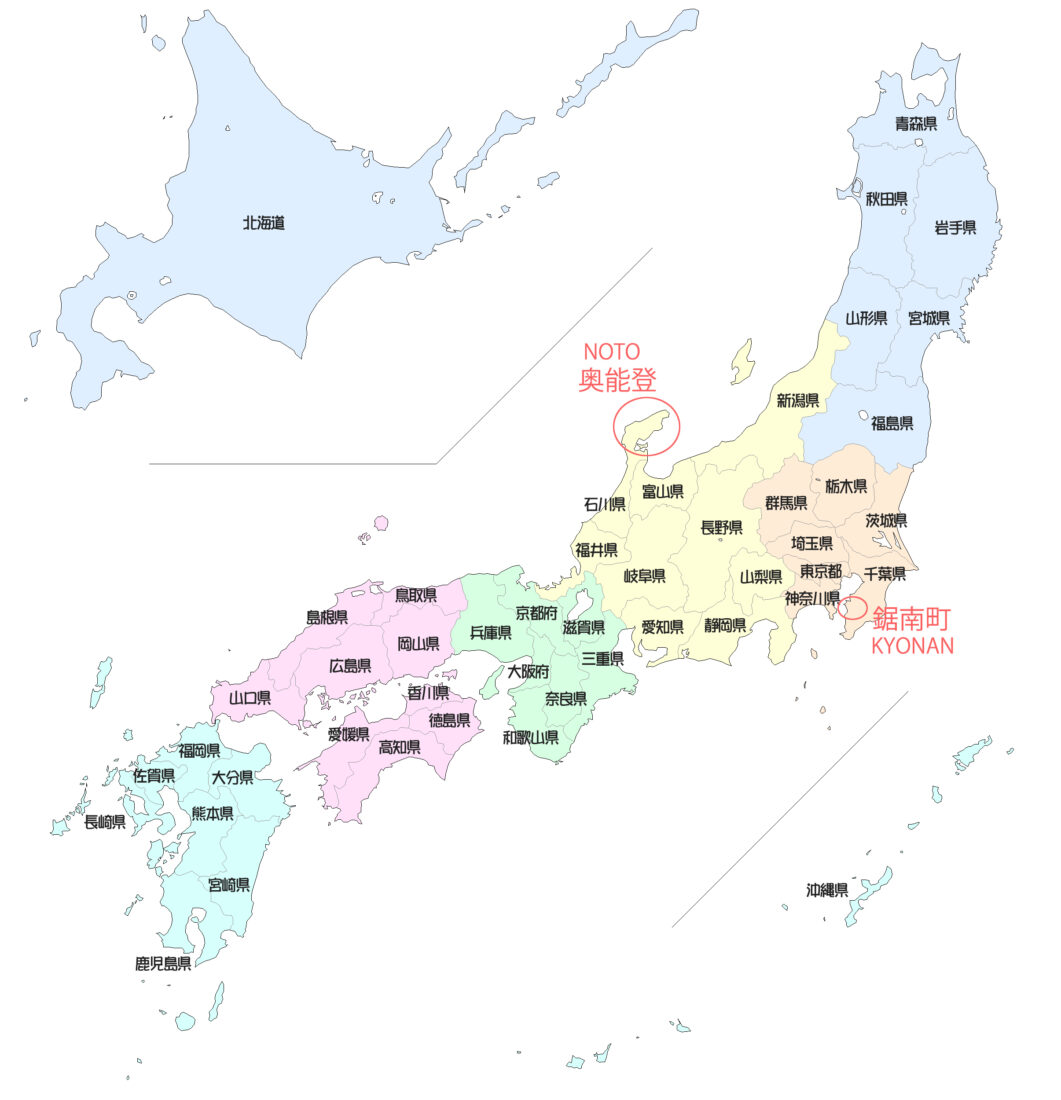
<奥能登からの素材 Materials from Oku-Noto>
奥能登と呼ばれる地方は、能登半島の先端部で山や海の豊かな自然に恵まれた地域です。文化的にも、大陸から流れ着いたであろう漂着神信仰やそれと結びついた数多くの祭りなど、日本古来の姿を想起させてくれるものがたくさんあります。
The region known as Oku-Noto is located at the tip of the Noto Peninsula and is blessed with abundant nature, both in the mountains and the sea. Culturally, there are many elements that evoke the ancient Japanese landscape, such as the belief in gods who may have drifted from the continent and the numerous festivals associated with them.
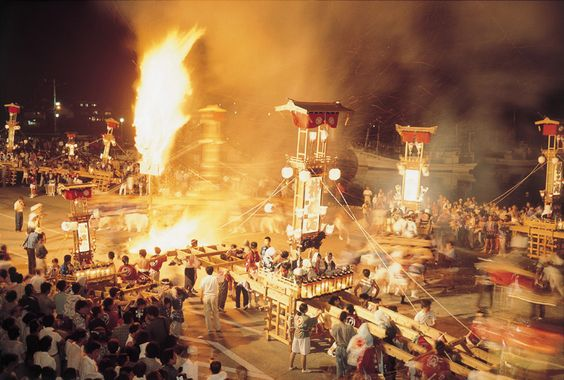
2024年1月1日、この地域で大きな地震があり、大きな被害が出ました。この地域に特有の伝統的な建物の多くが崩壊しました。
On January 1, 2024, a large earthquake struck the region, causing extensive damage, and many of the traditional buildings typical of the region collapsed.
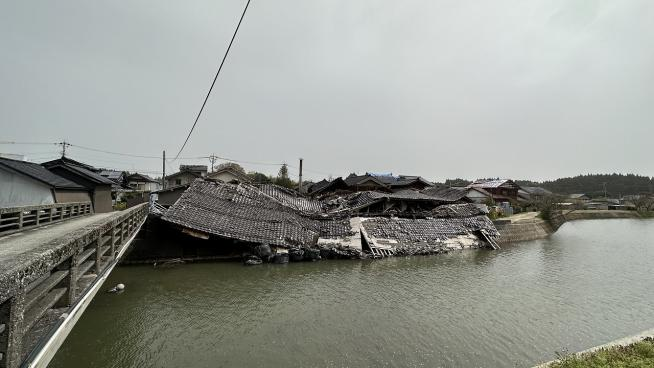
ぼくたちGRIDFRAMEは、その壊れた建物が解体されて「奥能登の時間を記憶したモノ」が失われてしまう前に、一つ一つのモノに向き合い、SOTOCHIKU素材として採取し、新しい空間づくりの素材として、引き継いでいきます。
Before the damaged buildings are demolished and the “things that remember the time of Oku-Noto” are lost, we at GRIDFRAME will face each and every item, collect them as SOTOCHIKU materials, and pass them on as materials to create new spaces.
・・・・・・・・・・
2024年8月15日から18日まで奥能登へSOTOCHIKU素材を寄付していただくために行ってきました。奥能登は、ぼくにとって4回目。スタッフMさんにとっては9回目です。
今回はあばれ祭でお世話になった宇出津のOさんから、SOTOCHIKU素材をご寄付いただける奥能登の施設やお宅をご紹介いただいたために東京からハイエースでやってきたのでした。
魂が宿っていなければSOTOCHIKU素材とは呼べません。可能であれば、持ち主にインタビューさせていただいて、素材と関連した思い出などを語っていただきます。インタビューができない場合でも、ぼくは素材が記憶する時間をできるだけ心に描いてみようと向き合います。
I went to Oku-Noto from August 15th to 18th, 2024 to donate SOTOCHIKU materials. This was my fourth time in Oku-Noto, and our staff member M’s ninth time.
This time, we came from Tokyo in a Hiace van because Mr. O from Udezu, who helped us out at the Abare Festival, introduced us to facilities and homes in Okunoto that would be willing to donate SOTOCHIKU materials.
If an item does not have a soul, it cannot be called a SOTOCHIKU material. If possible, I interview the owner and ask them to talk about any memories associated with the material. Even if an interview is not possible, I try to imagine as much as possible the time that the material remembers.
【羽黒神社の神輿庫の扉 Door to the portable shrine storehouse at Haguro Shrine】
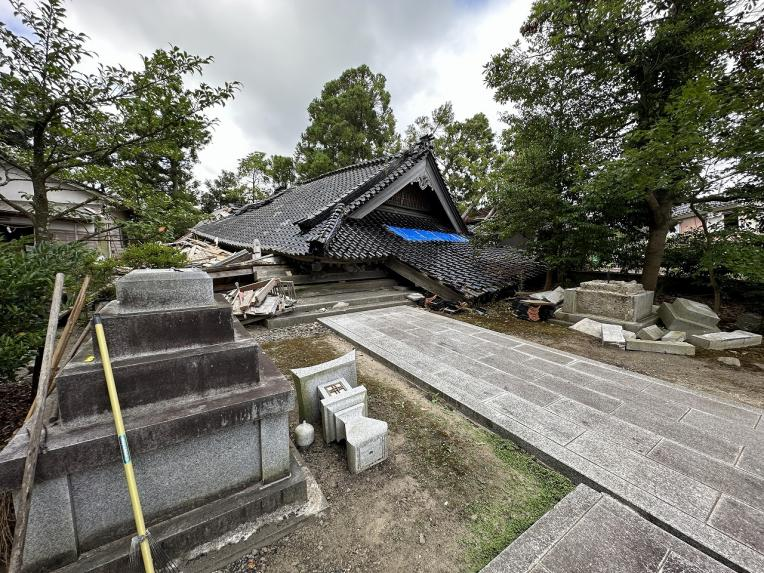
Oさんが、珠洲市正院町の羽黒神社をご紹介くださり、お訪ねしました。能登地震では、津波、隆起、火事などさまざまな被害が発生しましたが、地震のみの被害としては珠洲市正院町が最大ではないかと言われています。写真のように、本殿が崩れ落ちています。同様に、周辺の家屋もほぼ全壊状態です。
公費解体は住宅が優先され、寺社仏閣はこのままの状態が数年は続くのではないか、と言われていました。ちなみに、ぼくは奥能登の神社で鳥居が無事に立っている姿を見たことがありません。
宮司さんはお忙しい中わざわざ神社へお越しくださって、羽黒神社の歴史や現在の状況について丁寧にご説明くださいました。
592年、蘇我馬子に崇峻天皇が暗殺されたとき、第三皇子である蜂子皇子は聖徳太子の助けにより北陸へ逃れ、能登半島から船で海上を渡り、佐渡を経て山形県の由良の浦に辿り着きました。そこで出会った髭の翁に大神の鎮座する山をめざすように言われたが、途中道を失ってしまいました。そのとき、片羽八尺(2m40cm)もある3本足の大烏が飛んできて、皇子を山の中の昼なお暗い秘所へと導きました。これにより、皇子を導いた烏にちなんで山を羽黒山と名付けられた、といわれています。蜂子皇子はここで来る日も来る日も修行を積まれ、羽黒山、月山、湯殿山の出羽三山神社を開祖されたということです。そして、皇子の辿った日本海側の足跡に羽黒神社が点在しているそうです。
さらに、奥能登の地名にある、「八ケ山」や「鉢ヶ崎」も蜂子皇子に所縁があるのではないか、とブログに書かれています。https://ameblo.jp/hagurotetsu/
上の写真の屋根だけが残った本殿にブルーシートが張ってあるのは、ご神体をはじめ様々な大事なものを救出するのに、その部分の屋根だけ解体したからだそうです。さまざまな大事なものを救出された様子をブログでご覧になれます。
Mr. O introduced me to Haguro Shrine in Shoincho, Suzu City, so I visited. The Noto earthquake caused various damages, including tsunamis, uplifts, and fires, but it is said that Shoincho, Suzu City, suffered the most damage from the earthquake alone. As you can see in the photo, the main hall has collapsed. Similarly, the surrounding houses have also been almost completely destroyed.
It was said that houses were given priority for demolition at public expense, and that temples and shrines would remain in this state for several years. Incidentally, I have never seen a torii gate still standing at a shrine in Oku-Noto.
The chief priest took the time out of his busy schedule to visit the shrine and gave us a detailed explanation of the history and current situation of Haguro Shrine.
When Emperor Sushun was assassinated by Soga no Umako in 592, the third prince, Prince Hachiko, fled to the Hokuriku region with the help of Prince Shotoku. He sailed from the Noto Peninsula, crossed the sea, and passed through Sado Island before arriving at Yura Bay in Yamagata Prefecture. There, he met a bearded old man who told him to head for the mountain where a great deity resides, but he lost his way along the way. A large, three-legged crow measuring 2.5 meters (8 shaku) in length flew in and guided the prince to a secret place deep in the mountains, dark even in the daytime. It is said that the mountain was named Mount Haguro after the crow that guided the prince. Prince Hachiko practiced asceticism here day after day and founded the Dewa Sanzan Shrines of Mount Haguro, Mount Gassan, and Mount Yudono. It is said that Haguro Shrines are scattered along the prince’s footsteps along the Sea of Japan coast.
Furthermore, the blog states that the place names “Yatsugayama” and “Hachigasaki” in Oku-Noto may also have a connection to Prince Hachiko. https://ameblo.jp/hagurotetsu/
In the photo above, only the roof of the main hall remains, and a blue tarp has been put up over it. This is because only that part of the roof was dismantled in order to rescue various important items, including the sacred object. You can see how the various important items were rescued on our blog.
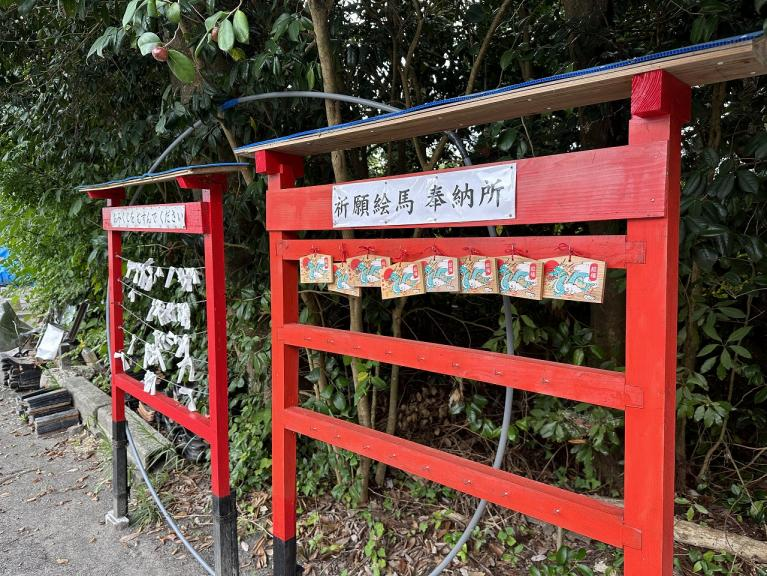
上の右の写真には、救出された絵馬とおみくじが大切に掛けられています。本震が到達した元旦16時10分までに祈願されたものですね・・・。
各地方での祭りには、奥能登にある各神社から宮司さんが集められます。宇出津のあばれ祭では、神輿と一緒に各家庭を回り、ご祈祷されたそうです。ご自身も仮設住宅に暮らしながら、被災者の方々を支えるために大忙しの毎日を送られています。
こちらからは、神輿庫の扉を採取させていただきました。神輿庫の扉は、入口の看板に使わせていただきました。
In the photo on the right above, the rescued votive plaques and fortune slips are carefully hung. They were prayed for by 4:10pm on New Year’s Day, when the main earthquake hit.
For festivals in each region, chief priests from each shrine in Oku-Noto gather together. At the Abare Festival in Udezu, he went around to each household with the portable shrine and offered prayers. While living in temporary housing himself, he is busy every day supporting the disaster victims.
We took a photo of the door of the shrine storehouse from here, and used it as a sign at the entrance.
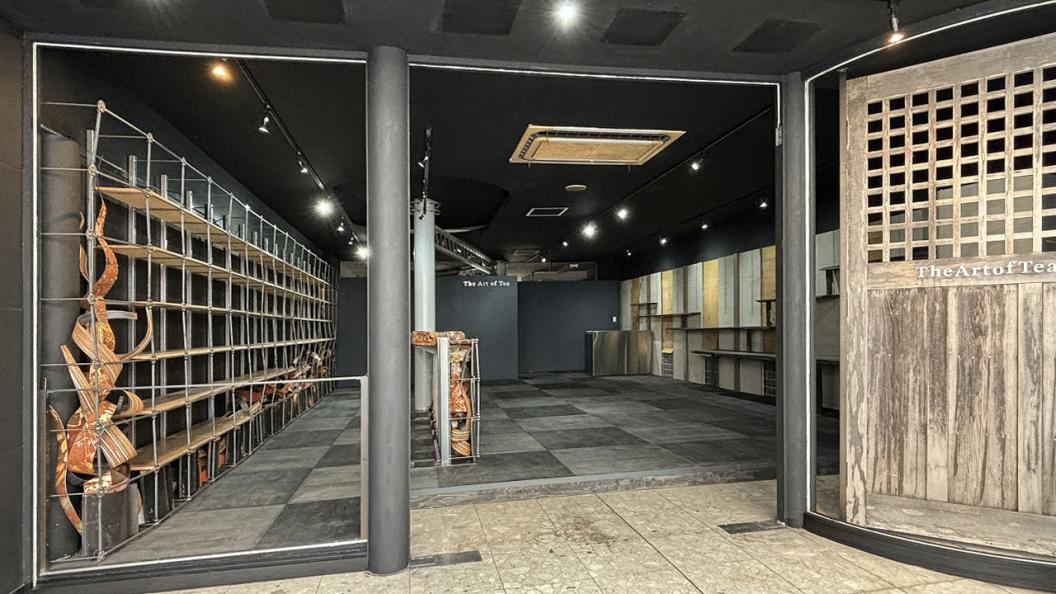
【瓦 Roof tile】
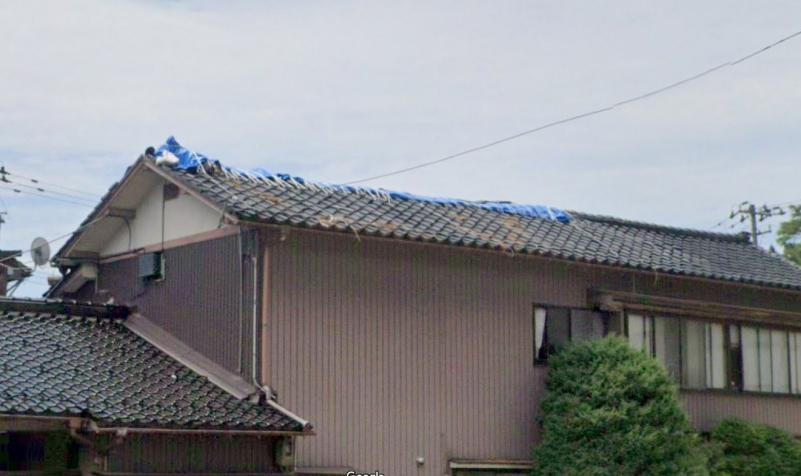
宇出津の八坂神社の近くの家で、地震の被害で屋根を葺き替えたために下ろした瓦を寄付していただきました。2階では雨漏りがひどいため、部屋の中にもブルーシートが張られていた状態が工事があった昨日まで8か月近く続いて、持主のIさんは漏電の心配から元旦から一度もテレビを観られなかったそうです。
葺き替えの職人は人手不足で京都の職人さんにお願いしたそうです。能登瓦はもう手に入らず、ガルバリウム鋼板に替わり、だいぶ軽くなりました。それだけ、地震には強くなったといえます。
否応なく今の風景は新しい風景に変っていきます。奥能登の象徴的存在だった能登瓦の風景はこれからどんどん少なくなっていくでしょう。
Iさんは小学生のときに輪島から宇出津へ引っ越されました。その頃は田んぼの中にこの家だけがポツンと建っていたそうで、あばれ祭の華やかに灯りを纏うキリコが目の前の広場で輪になって動くのを2階からワクワクしながら眺めていた、と仰います。
この瓦は、カウンターの正面や南部鉄器の棚の下部に使わせていただきました。
A house near Yasaka Shrine in Ushitsu donated roof tiles that had been removed after the roof was replaced following damage caused by the earthquake. Because of serious leaks on the second floor, the room had been covered in blue tarps for nearly eight months until yesterday, when the work was completed. The owner, Mr. I, had not been able to watch TV since New Year’s Day due to concerns about electrical leaks.
Due to a labor shortage, they asked a craftsman in Kyoto to do the re-roofing. Noto tiles are no longer being made, so they were replaced with galvalume steel sheets, which are much lighter. This means that the house is now more resistant to earthquakes.
Whether we like it or not, the current landscape will inevitably be replaced by a new one. The Noto tile scenery, which was once a symbol of Oku-Noto, will become increasingly rare.
Mr. I moved from Wajima to Ushitsu when he was in elementary school. At the time, this house was the only one standing in the middle of a rice field, and he says he used to watch with excitement from the second floor as the gorgeously lit kiriko floats of the Abare Festival moved in a circle in the square in front of him.
We used these tiles on the front of the counter and the bottom of the Nanbu ironware shelf.

【木板 Wood board】


あばれ祭で全国的にも有名な宇出津から車で数分の矢波という海沿いの集落の家が解体されるので、床板を寄付していただきました。畳下の床敷きにもかかわらず、寸分の隙間も見られない、とても丁寧に施工されたものでした。また300ミリを超えた幅のモノも多く、太い木から採られたものであることがわかります。
この木板は、The Art of Teaの棚板として使わせていただきました。
A house in the coastal village of Yanami, just a few minutes’ drive from Ushizu, famous nationwide for its Abare Festival, was being demolished, so floorboards were donated. Despite being used as flooring under tatami mats, they were constructed with such care that not even a single gap could be seen. Many of the boards were over 300 mm wide, indicating that they were taken from thick trees.
This wooden board was used as a shelf for The Art of Tea.
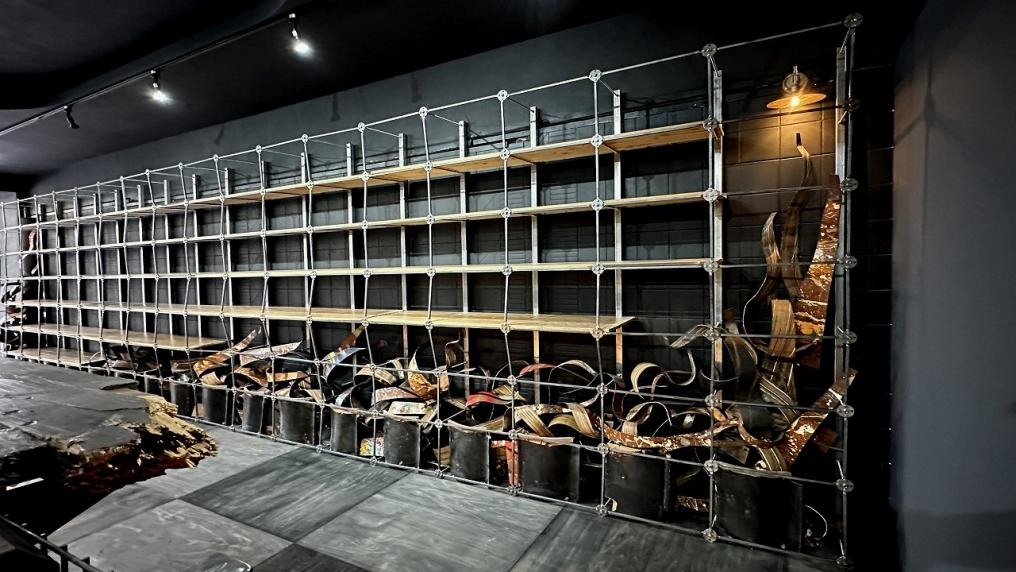
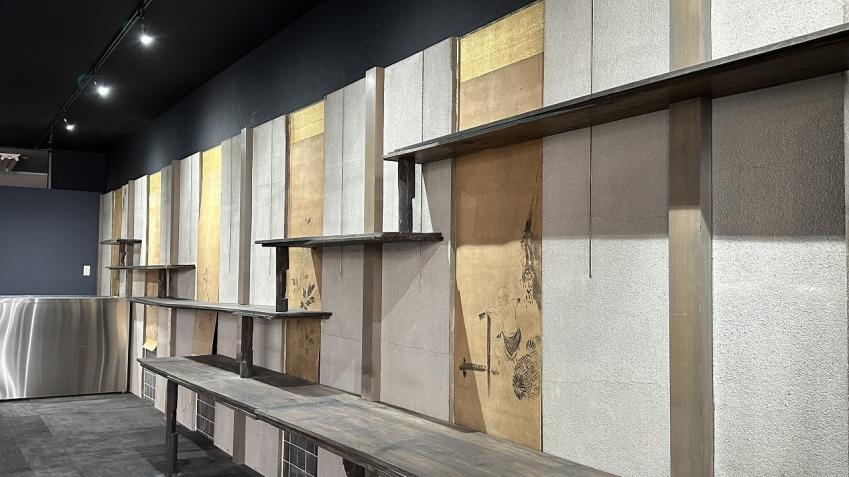
それぞれ、奥能登のみなさんが過ごしてこられた時間を記憶する大切なものとして、大切に使わせていただくことを改めて心に誓いました。みなさま、ありがとうございました。
I have once again vowed to myself that I will treasure these as precious memories of the time that everyone in Oku-Noto has spent together. Thank you all so much.
<千葉県・鋸南町からの素材 Materials from Kyonan Town, Chiba Prefecture>
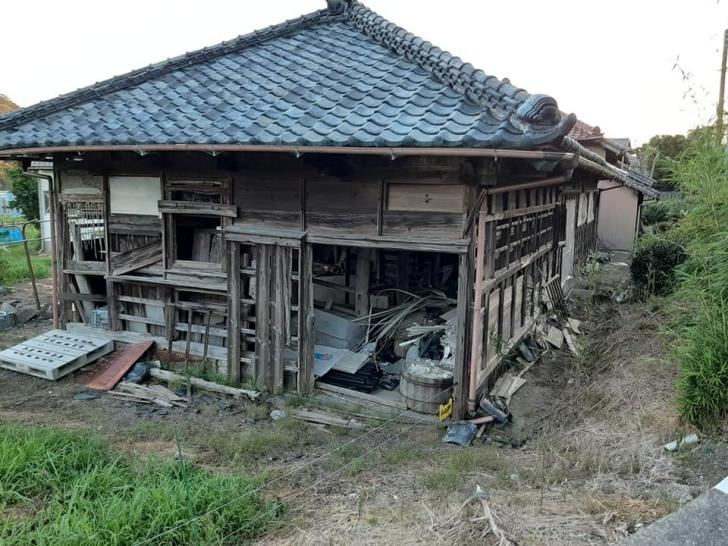
2024年8月10日に千葉・鋸南町へ古い木造倉庫が壊されて梁材を引取りに伺いました。この倉庫は2021年夏の【全国一斉】SOTOCHIKUシャルソンと呼ばれる、全国でSOTOCHIKUを探して写真を投稿し合うfacebookのイベントを開催したときに、100人以上が参加して1000枚以上の写真が集まった中の一枚に写っていた倉庫です。1000枚の中でベスト15に選ばせていただくほど深く印象に残っていた建物でした。
そのときのぼくの寸評を紹介しますと・・・
完璧な姿の重い瓦屋根を、ボロボロの下部構造が支えている。その頑張っている感じが、この建物へ感情移入させる。「大丈夫ですか?」と声をかけたくなるSOTOCHIKU。寄付されたら、SOTOCHIKU素材として下部から部分的に使用可。もしくは、補強を施して、SOTOCHIKU建物としてリノベーション可。
On August 10, 2024, we visited Kyonan Town, Chiba to collect the beams from an old wooden warehouse that had been demolished. This warehouse was featured in one of the more than 1,000 photos collected during a nationwide Facebook event called SOTOCHIKU Charson held in the summer of 2021, where people across the country searched for and posted photos of SOTOCHIKU. The building left such a strong impression on us that we selected it as one of the top 15 out of the 1,000 photos.
Here’s my review at the time…
A perfectly shaped, heavy tile roof is supported by a dilapidated substructure. The sense of its hard work makes you empathize with this building. SOTOCHIKU makes you want to ask, “Are you okay?” If donated, the lower part can be used as SOTOCHIKU material. Alternatively, it can be reinforced and renovated into a SOTOCHIKU building.
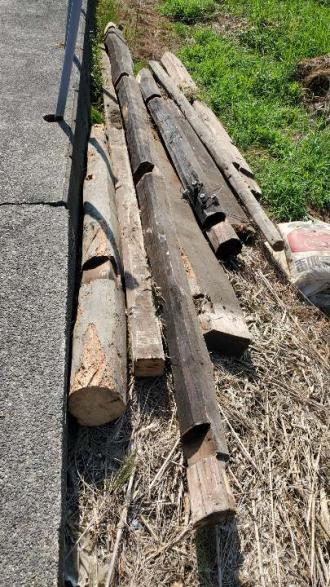
・・・というわけで、投稿写真で出会ってから3年の時を経て、寸評通り、部分的に使用させていただくことが実現して、とてもうれしく思います。上の写真の梁材が今回採取させていただいた素材です。
これらの梁材は、カウンターの天板として使用させていただきました。
So, three years have passed since I first encountered it in the photo, and I am very happy that I have been able to use it in part, just as I had suggested. The beam in the photo above is the material I harvested this time.
These beams were used as counter top.

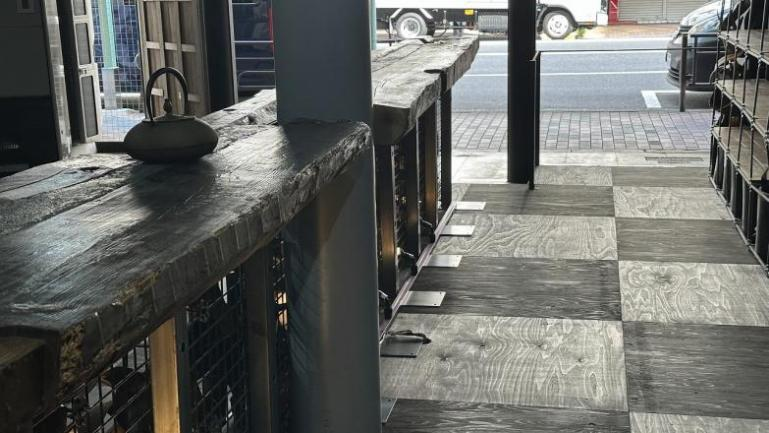
奥能登と鋸南、それぞれの地域の時間を記憶した素材がThe Art of Teaの空間に引き継がれています。ぼくらは、こうした失われゆくものがほんの一部でもどこかへ引き継がれていくことが循環をなして、永遠の未来へと時間の記憶が繋がっていくことを願っています。
Materials that bear the memories of the times of the Oku-Noto and Kyonan regions are passed down in the space of The Art of Tea. We hope that even a small portion of these lost things will be passed on somewhere, creating a cycle that will connect the memories of time to an eternal future.


Comments are closed